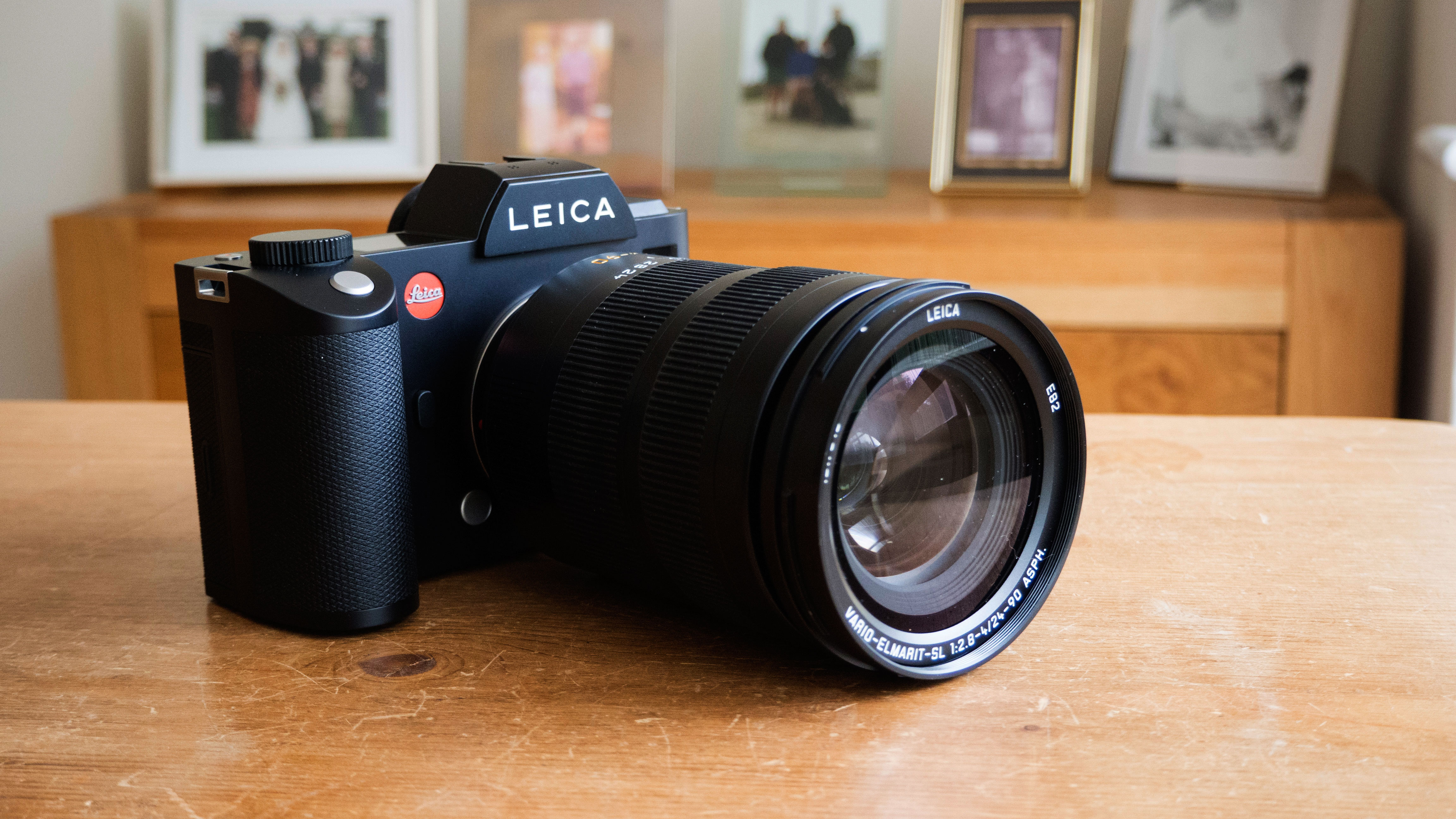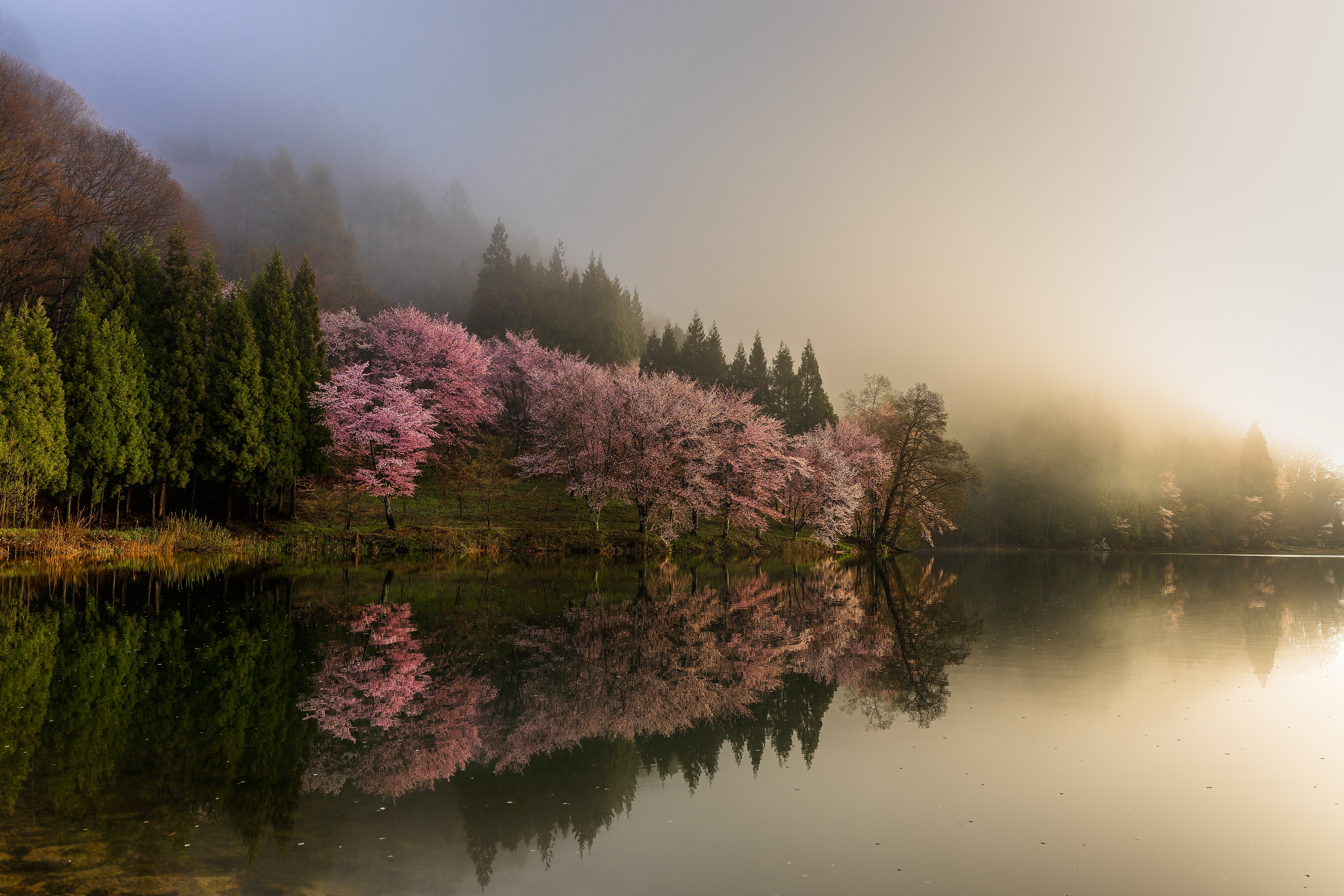Digital Camera World Verdict
A Leica comes a certain degree of exclusivity and prestige, but you pay a lot extra for these attributes. The SL is extremely competent, but there are less expensive cameras from Canon, Nikon and Sony that perform just as well.
Pros
- +
Superb build quality
- +
No-frills approach is actually a positive here
Cons
- -
Big, heavy and very expensive
- -
Limited lens choice
Why you can trust Digital Camera World
Perhaps one of the most notable of the Leica SL’s many surprising aspects is that when its design team first sat down three-and-a-half years ago to create a new professional camera system, they knew it wasn’t going to be an SLR. Yes, even before the arrival of Sony’s Alpha 7s, the Olympus OM-D E-M1 or Fujifilm’s XT-1, Leica was certain the future would be mirrorless.
At that stage even the future of mirrorless cameras was by no means certain so Leica’s strategy was courageous to say the least, but the basis of the design brief was a simple one.
“Speed, speed, speed,” states Stephan Schulz, who is Head Of Product Management for Leica’s Professional Camera Systems division. “We asked ourselves, ‘What does the perfect system look like?’ And we knew then it would not be an SLR. We knew we were looking at a full-frame mirrorless AF system.”
“But then,” adds Steffen Skopp, now Product Manager for the SL System, “We had to wait for the technology to become good enough, especially for elements like the electronic viewfinder”.
The first challenge, says Steffen, was to convince the board of Leica Camera AG – which holds the all-important purse strings – that the way ahead was mirrorless rather than reflex.
“We argued that the [medium format] S was only one pillar in our professional business and that we also needed something more compact and quicker. Leica is always about movement… about mobile cameras… this is part of the brand heritage. And our number one target was the group [of users] we had not addressed since the R system.”
In fact, it’s not just Leica’s 35mm SLR users – without a new camera body since the demise of the largely unloved R9 in March 2009 – that the new SL has to please, but also M users in search of a more contemporary back-end for their lenses and, more challengingly, the owners of Canon and Nikon pro-level DSLRs despairing at the lack of a serious mirrorless option from either manufacturer. That Leica has taken the mirrorless route for its new professional camera system sends out an important message, reinforcing the one that’s been coming from Sony since the introduction of the original Alpha 7 models. In reality, the A7R II in particular is undoubtedly more of a threat to the high-end DSLR businesses of Canon and Nikon than the SL, but the fact that Leica – and a significantly re-energised Leica at that – has them both in its sights should be cause for concern.
The best camera deals, reviews, product advice, and unmissable photography news, direct to your inbox!
SL is the start of something big at Leica and it’s serious about regaining a bigger share of the professional camera market than has been achievable with its S System. And the M System cameras now mostly sell to keen amateurs even if they’re still favoured by some photojournalists, fine-art photographers and editorial shooters.
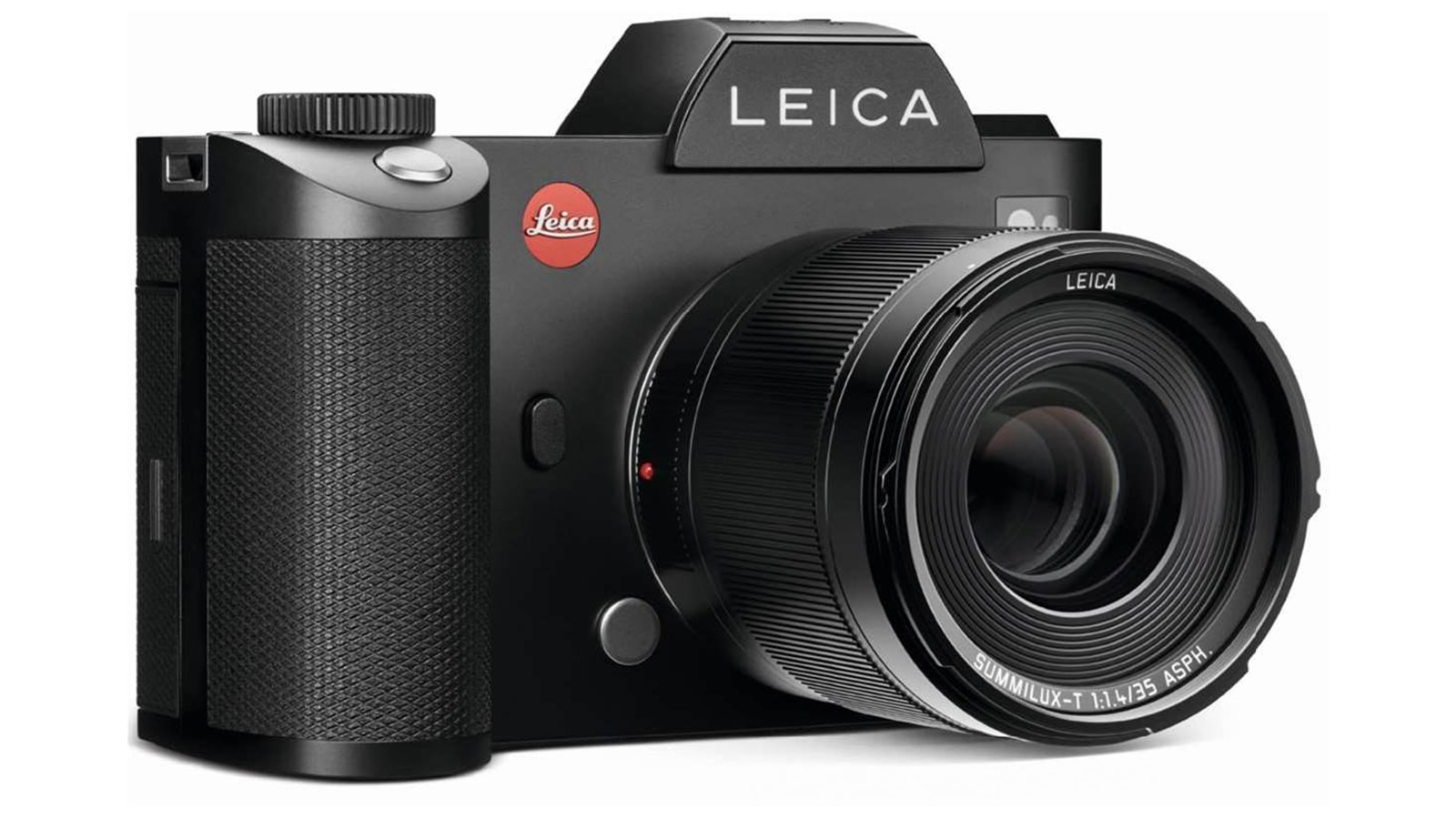
Tee'd up
So, in many ways, Leica’s first concern is those already dedicated to the marque. It may just be coincidence that the SL shares a model designation with one of Leica’s more successful 35mm SLRs – the Leicaflex SL – and Stephan Schulz says there’s some elements of another, the R3, in the new camera’s styling, but there’s no question that this is very much the contemporary realisation of an ‘R10’… not just in the design philosophy, but also the target audience.
By default, there had to be a new lens mount – in fact, a derivative of the T’s all-electronic fitting – but there are converters for M, R and S, the latter maintaining autofocusing. Interestingly, trying out the SL – at its international launch in Germany – with a couple of M lenses, it was surprising just how well these combinations worked… not just in terms of the handling balance, but adding such modern conveniences as a focus peaking display and exposure previewing to the classic Leica glass. The same is true of fitting the brilliant R lenses (of which, incidentally, there’s a total of 51). It’s perhaps not such a coincidence either that, locally, the SL body costs pretty much the same money as an M Typ 240. Just saying.
For the record, SL apparently stands for 'spiegel los' in German which means, put simply, 'no mirror', although it’s also been suggested it could mean 'S Lite' – which makes sense in terms of one likely group of intended users – or, even more straightforwardly, 'SLR' minus the 'R'. Regardless, while it is indeed considerably smaller than the S, the SL is still a pretty big camera by mirrorless standards, even those with a built-in viewfinder.
Not surprisingly, it has an all-metal bodyshell milled from aluminium blocks – although not a one-piece component like the T – with, importantly, sealing against the intrusion of dust or moisture. Dimensionally, it’s surprisingly close to the 1960s-vintage Leicaflex SL, but with more of the overall look of the chunkier R3 and generally cleaner, crisper lines thanks to its digital-era control layout. And here there are a few surprises such as the absence of conventional dials or even a ‘conventional’ rear panel layout. Instead, there’s a large master input wheel (accompanied by a smaller secondary thumbwheel), a joystick-type navigator, a large info read-out panel and a four-key arrangement around the monitor screen which is similar to the layout used by Phase One on its IQ series capture backs. As on the Phase One backs, these elongated keys aren’t marked because they perform a variety of duties depending on the camera’s mode. In fact, the only external control on the SL that is marked is the power on/off lever. While this layout is nowhere near as progressive as that of the T – although there are touchscreen controls here as well – it’s still pretty advanced by Leica standards and makes the SL look almost as cool as its mirrorless ‘APS-C’ format cousin… but a whole lot more purposeful.
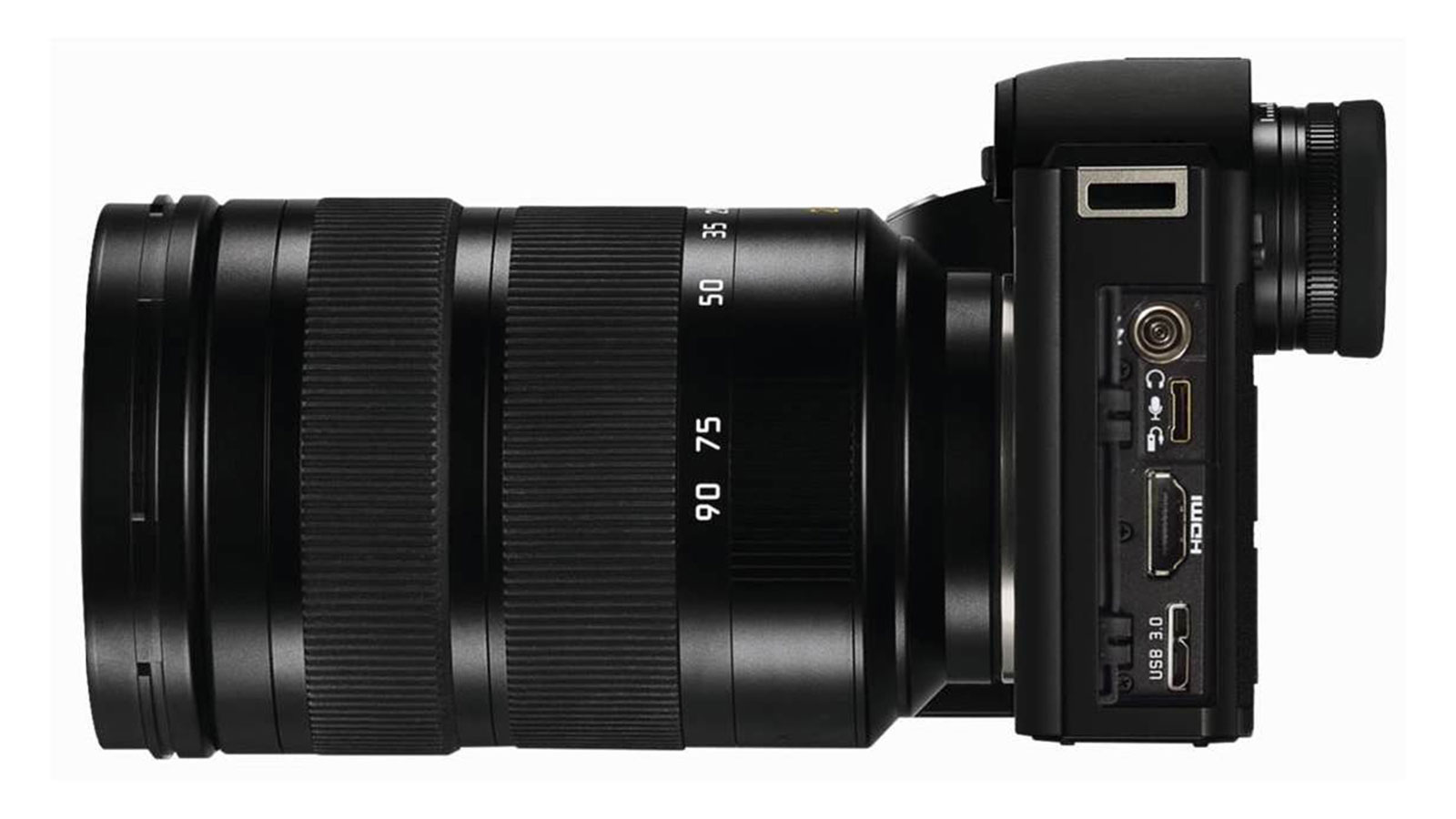
Finder keeper
Under the viewfinder’s cover – doing a good imitation of the R3’s squared-off pentaprism housing – is the best EVF in the business. It’s a 1.67 cm display – which Leica calls “EyeRes” – with a resolution of 4.4 million dots and a magnification of 0.8x. We thought the Q’s electronic finder was pretty good, but this is better again, not just in terms of its definition and overall crispness, but also the dynamic range and responsiveness (the refresh rate is at 60 fps).
Given just about everybody coming to the SL will be transitioning from an optical viewfinder of some sort, Leica knew its EVF had to be good and it’s clearly (no pun intended) a critical component of the new camera. Just what Fujifilm, Olympus and Sony would make of the claim that the SL is “the first ever camera for professional photography with an electronic viewfinder” is open for discussion, but with the EyeRes EVF performing as well as it does, Leica is able to ‘sell’ the specific benefits – namely low light superiority, previewing of camera settings, and useful displays such as a dual-axis level indicator (and, of course, focus peaking). The EVF is key to the future of mirrorless cameras in the pro sector (if not in general) and the SL’s is big, bright and totally convincing. Game over, really.
The eyepiece incorporates a proximity sensor to enable automatic switching between the EVF and the monitor screen, although both can be switched manually if desired. The monitor – a super bright LED panel – is fixed, but has a number of touch controls (although mostly for image review). The live view image can be extensively configured with, among other elements, a real-time histogram, a level indicator a highlight warning (with the option of using a zebra pattern when shooting video) and a choice of two grid guides. There are also various options for displaying camera settings – either in greyed-out strips above and below the image or superimposed over it – and the AF system’s focusing points which can be selected by touch. With a couple of minor variations, the monitor’s displays are fully replicated in the EVF.
Icons appear alongside each of the four rectangular keys to access various functions, including the menus, image replay and the display configurations. Once, for example, the menu page is accessed, the four control keys take on new roles such as accessing further menus for set-up and image capture (like on the Q, the camera settings and image capture settings – such as the file format, resolution and aspect ratio – have their own menus). With the sub-menus they become, for instance, the Return and OK keys. Navigation is via the joystick or the rear input wheel which are then pressed to access the sub-menus and/or enter settings. While nothing seems quite logical at first, it’s truly surprising how quickly everything starts to feel very comfortable and intuitive. Our test camera arrived without an instruction manual, but frankly we didn’t need it and it only took a couple of minutes to work out all the procedures… well, with one exception as it did take a few more minutes of poking and prodding to ascertain that changing exposure modes is performed by first pressing in the rear input wheel and then twiddling it while big fat ‘M’, ‘P’, ‘T’ and ‘A’ letters appear sequentially in the monochrome read-out panel.
In addition to the exposure mode, this display – which is nicely bright too – also shows the exposure settings, active card slots, the number of frames remaining, battery level and warnings when certain functions such as exposure bracketing are engaged.
Family ties
There’s obviously some sense in Leica using the same lens mount for its two mirrorless camera systems and so the lenses are interchangeable, although the T requires a firmware upgrade before any SL optics are fitted (the consequences are quite dire for the SL lenses otherwise).
The T mount is re-christened the TL mount and so the six lenses already available in this system can be fitted to the SL which, obviously, switches to the ‘APS-C’ format (with a resolution of 10.3 megapixels).
The SL has launched with only one dedicated lens which has been the source of some criticism, but then Sony introduced the Alpha 7 system with only one FE mount lens too, and it’s subsequently worked pretty quickly to rectify this. It’s hard to see Leica going quite as quickly given it’s already announced that the next two SL lenses won’t be available until the middle and end of 2016. Sony saved the day by promoting the use of mount adaptors and, as noted earlier, Leica is doing the same with its ‘in-house’ mounts, but would probably also be prudent to have converters for Canon EF and Nikon F as soon as possible (a note to fellow German company Novoflex perhaps). The Sony Alpha 7 story proves these make a difference… just look where that system is now.
The first L mount lens is a fairly beefy 24-90mm f2.8-4.0 autofocus zoom which makes for a formidable looking set when fitted to the SL, but in practice, it’s not such a handful and is comparable with the D-SLR system 24-70mm f2.8 zooms, especially Nikon’s (which, admittedly, is a pretty big lens too). Due next is a companion 90-280mm f2.8-4.0 telezoom which, it has to be said, is quite a monster thanks to its focal range and lens speed. A 50mm f1.4 fast prime is scheduled for the end of 2016. There are no doubt sound reasons for this program, but a fast prime – and a 35mm f1.4 would arguably have made more sense in Leica terms – ready to go from the start would have almost certainly created more interest. In fact, a couple more fast primes must surely now be a priority. All the SL lenses are weather-proofed too, and both the zooms have optical image stabilisation.
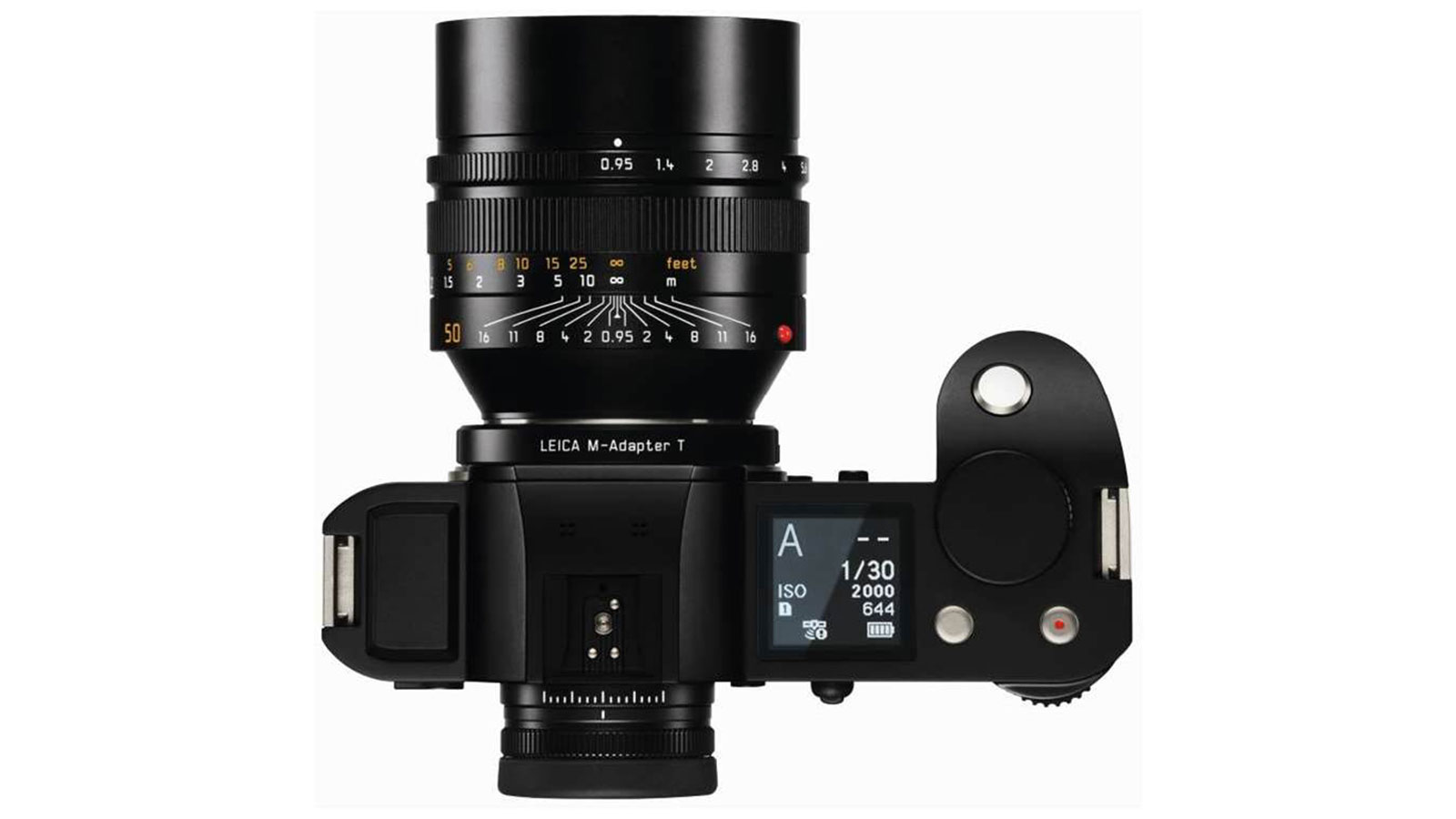
Sensor and speed
At the other end of the imaging path is a new version of the 26.3 MP full-35mm CMOS sensor that’s already doing sterling service in the Q. It’s matched with Leica’s ‘Maestro II’ high-speed processor which delivers continuous shooting at up to 11 fps and, perhaps more notably, 4K video recording. It goes without an optical low-pass filter, and the native sensitivity range is equivalent to ISO 50 to 50,000. The top shooting speed is with the AF and AE locked to the first frame, but the SL still operates at a respectable 7.0 fps with continuous AF adjustment.
The SL captures 14-bit RAW files in the Adobe DNG format and JPEGs in one of three image sizes. It has dual slots for SD format memory cards, one with UHS-II speed support (i.e. for SDXC) and the other at the UHS-I standard. The slots can be configured so JPEGs are saved to one card and RAW files to another simultaneously.
The SL can record Cinema 4K video (i.e. 4096x2160 pixels) at 24 fps or Ultra HD (3840x2160 pixels) at 25 fps, internally at 8-bit 4:2:0 colour or externally – via its HDMI connector – at 10-bit 4:2:2 colour. Commendably, the HDMI output is a full-size Type A terminal which Leica opted specifically for its added durability over the smaller versions with their flimsier plugs. The 4K modes are recorded in the cropped Super 35mm format, but Full HD recording uses the full sensor and there’s the choice of 50, 25 or 24 fps plus a ‘slowmo’ speed of 100 fps.
There’s clearly some thought here then, that the SL has potential as a pro-level video camera because it also has the option of using the V-Log L gamma profile for an extended dynamic range and easier grading in post-production. Then, of course, don’t forget that Leica currently offers a choice of 21 high-performance cinema lenses which can be fitted to the SL via a PL mount adaptor.
The camera has built-in stereo microphones with manually adjustable levels and a switchable wind-cut filter while an optional adaptor – which fits to the SL’s multi-connector accessory terminal – provides a standard 3.5 mm stereo audio input and output.
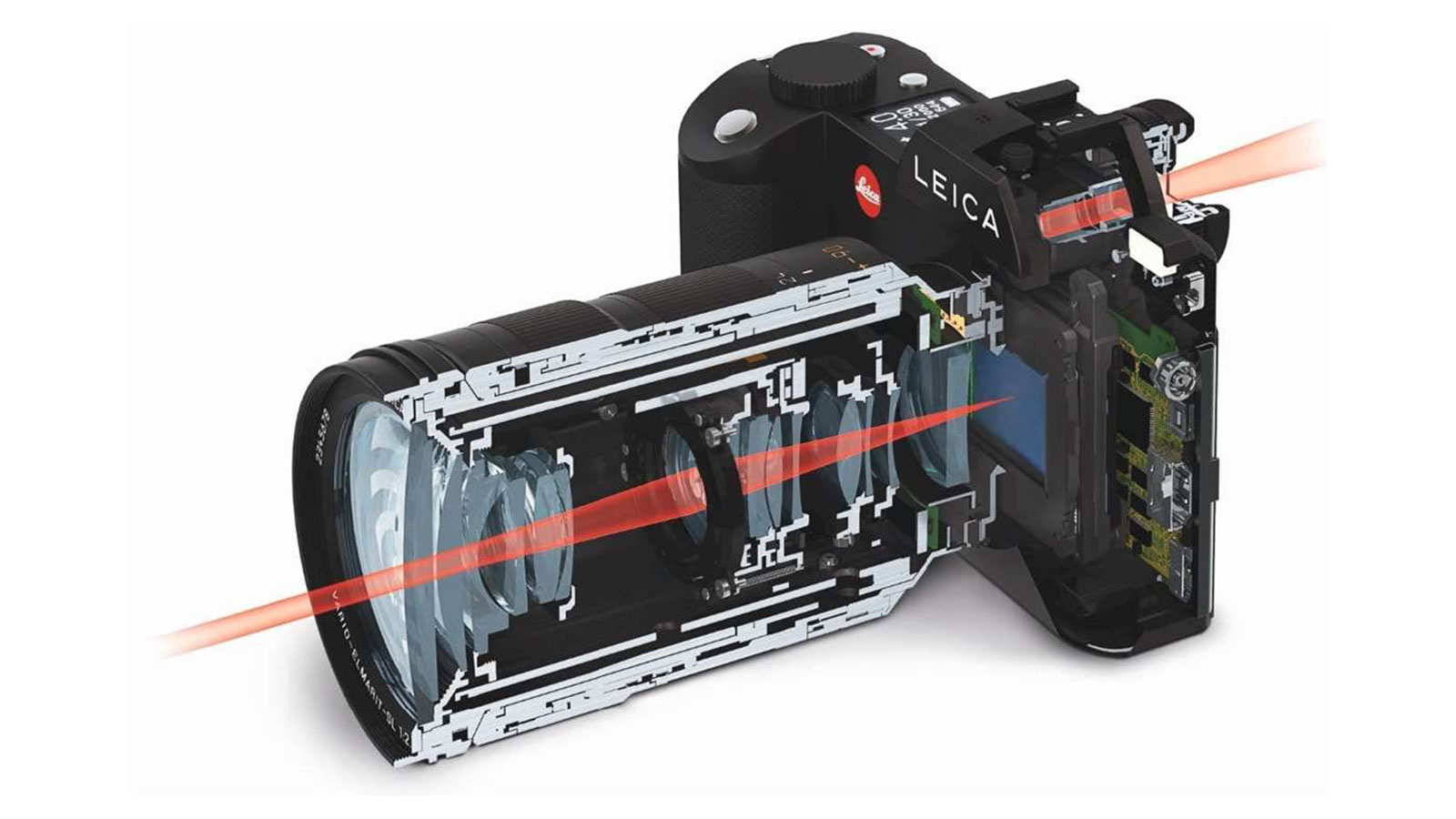
Essential elements
Like the Q, the SL conforms to Leica’s minimalist approach – as expressed in the slogan “Das Wesentliche” which translates as “the essential” – only more so. This is most evident in the processing options available for JPEG capture which comprise simply adjustments for contrast, colour saturation and sharpness. Monochrome capture is accessed via the colour saturation settings. There’s no choice of compression levels and certainly no gimmicks like filter effects.
Autofocusing is via contrast-detection measurements on the sensor with the choice of 49 – which provides about 80 percent frame coverage – or 37 points. There’s the choice of auto or manual point selection plus a zone mode which uses a moveable cluster of nine points. Switching between single-shot and continuous operation is done manually, but there is a full-time manual override which kicks in automatically when the lens’s focusing collar is turned. Low-light AF assist is provided by a built-in illuminator and when manually focusing there’s the choice of a magnified image and/or a focusing peaking display in one of four colours. Curiously, though, only the peaking display is automatically activated when the focusing collar is rotated, and image magnification has to be separately engaged.
Leica keeps things very simple as far as exposure control is concerned. The standard set of modes is supported by an AE lock, up to +/-3.0 of compensation and auto bracketing over sequences of three, five and seven frames. The AEB facility can also be set to HDR capture which combines the three frames to give an expanded dynamic range. There are no separate adjustments for dynamic range expansion, noise reduction or lens corrections, although the camera will certainly be doing some of this in the background as a matter of course. How do we know this? Because when either R or M lenses are fitted via their adaptors, lens correction menus do indeed become available.
The SL has a conventional focal plane shutter – a sensor shutter may come later – with a speed range of 60-1/8000 second plus ‘B’ (which has a maximum duration of 30 minutes). The shutter assembly is tested to 200,000 cycles and backed by a two-year warranty. Flash sync is at all speeds up to 1/250 second, but there’s no built-in flash. External units sync via an ISO-standard hotshoe or a PC terminal, and two new dedicated on-camera flash units accompany the SL – the SF 64 (which has a metric guide number of 64 at ISO 100) and the smaller SF 40.
Auto white balance correction is supplemented by eight presets (including four for different types of fluoro lighting), provisions for making and storing one custom setting, and manual colour temperature adjustment over a range of 2000 to 11,500 degrees Kelvin. There is neither fine-tuning nor auto WB bracketing.
So does the SL possess any frills? Well, it does have both a built-in GPS receiver and WiFi which may or may not be considered frills by some. There’s also an intervalometer (programmable for up to 9999 frames), a dual-delay self-timer and provisions for entering copyright information, but there’s no doubt that Leica has been pretty rigorous in applying the 'Das Wesentliche' ethos. And, on balance, the SL really doesn’t lack anything that’s essential in terms of either its control systems and supporting functions, or its displays and operation.
Speed and performance
With our reference 64 GB Lexar Professional SDXC (Speed Class 1) memory card loaded, the Leica SLR captured a burst of 65 JPEG/large frames in 5.956 seconds which represents a continuous shooting speed of 10.91 fps… as near to the claimed 11 fps as really makes no difference. The typical test file size was 7.7 MB and the generous 2.0 GB buffer memory emptied extremely quickly so the SL does appear to fulfill its need-for-speed brief. Likewise the AF which, although using entirely contrast-detection measurement, is lightning fast and extremely reliable, including when tracking moving subjects. While Leica hasn’t published a sensitivity range, it appears to work very well in low light situations as well.
In terms of image quality, there are some similarities with the Q, especially with JPEG capture where Leica has erred on the side of conservatism in terms of the colour saturation and contrast, presumably to provide a good starting point for any subsequent image processing post-camera. Consequently, if a little more ‘punch’ is desired straight out of the camera, both the saturation and contrast settings need to be ramped up to at least the ‘Medium High’ setting. Overall though, the dynamic range, the resolving of fine details and the smoothness of the tonality are truly excellent.
Leica also treads a very fine line between applying noise reduction processing and maintaining the maximum definition when shooting at the higher ISO settings. So there’s some film-like graininess, but fine detailing is very well preserved even at ISO 6400 and 12,500, as are the colour rendition and dynamic range. As with the Q, the RAW files also have so much detailing – again at least up to ISO 12,500 – that any post-camera noise reduction can be applied without unduly affecting the overall image quality. The SL’s Adobe DNG files also exhibit excellent colour reproduction, including skin tones, and a nicely wide dynamic range. In fact, the dynamic range appears to be a little improved over that of the Q, especially in the highlights.
Overall, the multi-zone metering appears reliably accurate, although a little underexposure – between -1/3 and -2/3 stops compensation – helps when using JPEG capture in very contrasty situations, giving more range in the highlights while the shadows can be easily brightened later.
Time spent with the SL is commensurate with settling into a comfortable and efficient way of working with it. Unlike the Q, the SL doesn’t have a conventional shutter speed dial (nor do the L mount lenses have an aperture collar), so there isn’t the option of a largely traditional modus operandi, but it’s also far less confrontingly progressive than the T. The joystick is a nice touch (literally), but otherwise the SL is driven by a fairly standard – for these times – combination of menus, hard keys and input wheels.
It won’t be hard for DSLR users to make the move.
Verdict
Taking on Canon and Nikon in the professional camera sector is a challenge that’s proved too much for a long list of would-be challengers in the past (Minolta, Olympus, Contax, Pentax and Rollei among them).
Leica has been here before too, particularly with its 35mm SLRs, but things are changing quite dramatically now and the catalyst is the coming-of-age of mirrorless cameras which means there’s a whole new playing field. Consequently, the SL puts Leica back in the game… which, at this point, is what matters the most because, in reality, it’s been a long time since the marque could be considered a serious contender in this category.
So, as we noted at the outset, the SL has a fair amount of weight resting on its (broadish) shoulders, but it looks to be up to the job. Beyond the superlative built quality – an integral part of the whole Leica experience – is a highly capable camera which builds on the key benefits of the mirrorless design (particularly, in its case, the EVF) while delivering a professionally-focused set of features and specifications.
The good news for Leica is that, beyond this serious intent and its slightly austere looking exterior, the SL actually is, more than anything else, both an engaging and endearing camera. Both are characteristics that may just give it a head start.
Read more:
These are the best Leica cameras today
We pick the best mirrorless cameras on the market
The best cameras for professionals

Paul has been writing about cameras, photography and photographers for 40 years. He joined Australian Camera as an editorial assistant in 1982, subsequently becoming the magazine’s technical editor, and has been editor since 1998. He is also the editor of sister publication ProPhoto, a position he has held since 1989. In 2011, Paul was made an Honorary Fellow of the Institute Of Australian Photography (AIPP) in recognition of his long-term contribution to the Australian photo industry. Outside of his magazine work, he is the editor of the Contemporary Photographers: Australia series of monographs which document the lives of Australia’s most important photographers.
